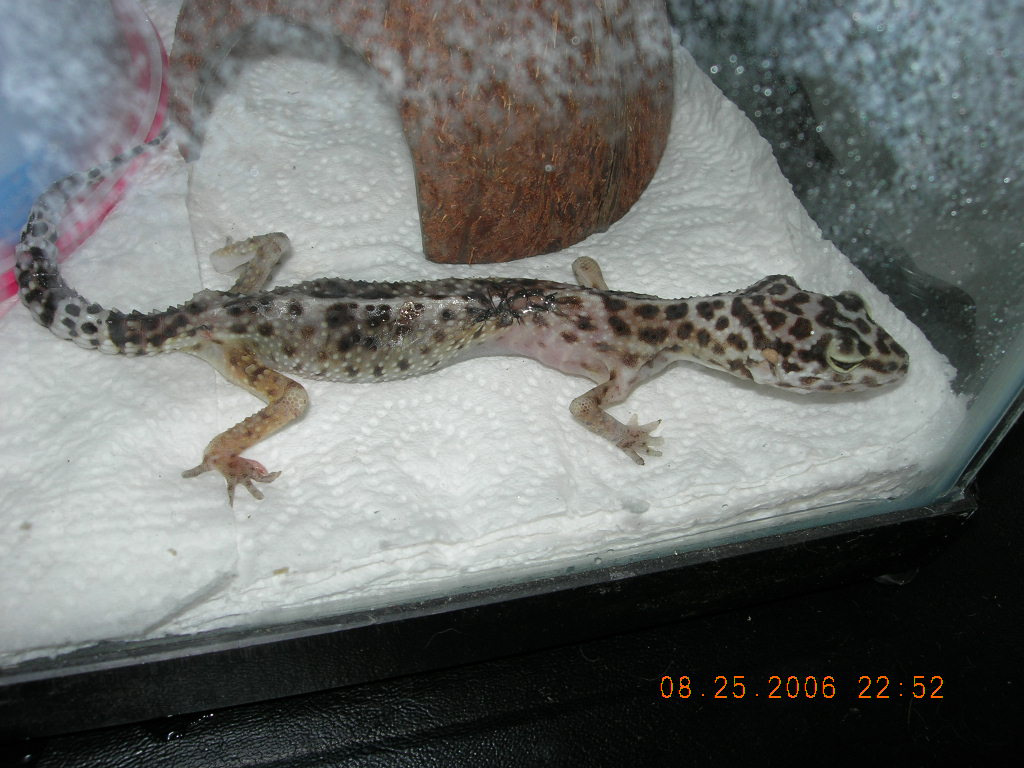I have two problems. One is that one of my females is a picky eater and I’m not sure what to do, and the second is that my other female just stopped eating. I’ll start with the first one which is the picky eater. Ever since I got her she has been shy and flighty, she also hasn’t really eaten anything grated I’ve only tried mealworms, super-worms, and crickets. I also just ordered Dubias but with the virus they will take a couple weeks to get here. I just got the super worms in a few days ago and they are bigger than i thought so that might be a problem but with the meal worms she wouldn’t really touch them, only a few here and there. She did eat the crickets but they escaped the bowl before she ate them all and crawled under nether the paper towel and died. Any tips to keep them in the bowl? She hasn’t lost any weight thats the strange thing. When I got her she was 45 grams and has stayed at or a gram below 45, any tips on how to get her to eat or what to try? With the second gecko when I got her she was slamming food and didn’t refuse her mealworms and was that way up until a few weeks ago when she stopped eating. She has lost two grams so far. Thats when I decided to try superworms but she hasn’t had any interest in them ( but i’ve only had them for a few days) and when I had crickets she did eat them. So I’ll probably get those in the next week since both ate those I just have to find a way for them not to escape the bowl or tub. I’m just looking for any advice or tips on how to get them to eat. The temps. in their cage haven’t changed, I did put my AC in but it didn’t change the temperature of the room from before I had it in. Sorry for the long post I just want them to be happy and healthy.
What are your temps? What substrate are you using? Do your geckos live alone or with each other? How often are you handling them?
There are bowls for sale that are designed to keep super worms in.
The hotspot in is 89-91 degrees and the cool end is mid 70’s, I’m using paper towel as a substrate, my geckos live alone but in tubs next to each other so i’m not sure if that has anything to do with it, and I handle them both about 5-15 minutes a day.
One thing I can suggest is handle them less. Like 2-3 times a week at the most. Over handling can and will stress them. And do not leave crickets in with your lizards, ever. They can and will eat your geckos given the chance, so remove them if they are left uneaten. Maybe try tong feeding? And do you dust the bugs with supplements? Also, I don’t know of anyway to keep bugs that can jump from escaping a bowl. This is why you feed 1 at a time and don’t leave any extra (especially since they can eat your geckos). Also, mealworms/superworms are not a good staple diet for leos despite popular belief. Dubias, black soldier fly larvae, silkworms, and tiny hornworms are best. Mealworms are basically just chitin and fat. Supers are mostly chitin.
Alright I’ll definitely cut back on the handling and I’ll get a pair of tongs and try feeding like that. I do dust my bugs with vitamins and calcium, and alright I’ll order some other bugs like silkworms and hornworms. I did just order dubias yesterday to try them. Thank you.
watch out for the crickets. they can eat your gecko…
I would actually recommend not handling at all until they are feeding consistently.
Alright thank you, once I get the tongs in I’ll try feeding them crickets with them.
Ok I’ll cool it with the handling till I can figure out what they’ll eat.
Female leopard geckos can sometimes be very picky eaters during the breeding season. My bred females refuse all food immediately prior to laying (no room for food with eggs there!), and my non-breeding girls also go through spurts of not eating.
How long have the geckos been with you?
If you really want to feed crickets that cannot get out of the bowl, i know a method to hobble crickets but it’s not very humane. You can take a pair of tweezers and ‘pop’ the jumping leg off of a cricket. It’s been years since I’ve done it, but (stabilizing the rest of the cricket), you take the tweezers and clamp right in the middle of the “thigh.” Be careful as you pull or you may eviscerate the cricket. Once you get it down, you can do it quickly and then set them back in a dish- after that they have the mobility of a beetle. If you are feeding crickets, make sure you gutload and never ever leave them loose in the tank.
This is a pic I took of a gecko I tried to rescue many years ago. He was weak from neglect, and some of the crickets left in his cage (before coming to me) ate a hole into his coelomic cavity (the combined chest/abdomen that reptiles have). I hope that showing people this will help spread the word. Poor guy died 2-3 days later.
That is so sad thank you for trying to save him and ty for posting this im getting my first gecko soon, and I didn’t know this.
oh my god that’s horrific! how could someone ever let their gecko get in that condition???!?!?!?!?
I would definitely do some more research then, if you didn’t know about the cricket thing.
